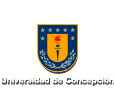[:en]Closing the 2016 academic year, last January two master students of the Millennium Institute of Astrophysics got its master degree with honors, adding two new researchers to our institute.
In Universidad de Valparaíso, Nicolás Godoy Barraza defended his thesis entitled “An Astrometric Reference System Towards the Milky Way’s Bulge: Quasi-Stellar Objects from the VVV Survey,” in which he not only discovered and confirmed new quasars, but also used “Big Data Science” tools to analyze information of VVV and Gaia Surveys. In order to do so, he worked with professor Radostín Kurtev and Amelia Bayo of Universidad de Valparaíso.
For its part, Enrique Paillás Villavicencio defended his thesis “Baryon effects on void statistics in the EAGLE simulation,” in which he studied Baryon matter’s effects in cosmic voids of the great-scale structure of the Universe. Enrique, member of MAS and Universidad Católica’s IA, worked with professor Nelson Padilla.
[:es]Cerrando el año académico 2016, el pasado enero, dos estudiantes de magíster, asociados al Instituto Milenio de Astrofísica, obtuvieron su grado con distinción máxima, sumando dos nuevos investigadores a la filas del MAS.
Se trata de Nicolás Godoy Barraza, que defendió su tesis en la Universidad de Valparaíso, titulada “An Astrometric Reference System Towards the Milky Way’s Bulge: Quasi-Stellar Objects from the VVV Survey”, en la cual no sólo descubrió y confirmó nuevos quásares, sino que también usó herramientas del “Big Data Science” para analizar información de los sondeos VVV y Gaia. Para ello, contó con la guía del Profesor Radostín Kurtev y la Profesora Amelia Bayo de la mencionada institución universitaria.
Por su parte, Enrique Paillás Villavicencio, defendió su tesis “Baryon effects on void statistics in the EAGLE simulation”, la cual estudió los efectos de la materia bariónica en los vacíos cósmicos de la estructura a gran escala del Universo. Enrique, miembro del MAS y del Instituto de Astrofísica de la Universidad Católica (IA), tuvo como profesor guía al docente del IA Nelson Padilla.
[:]












